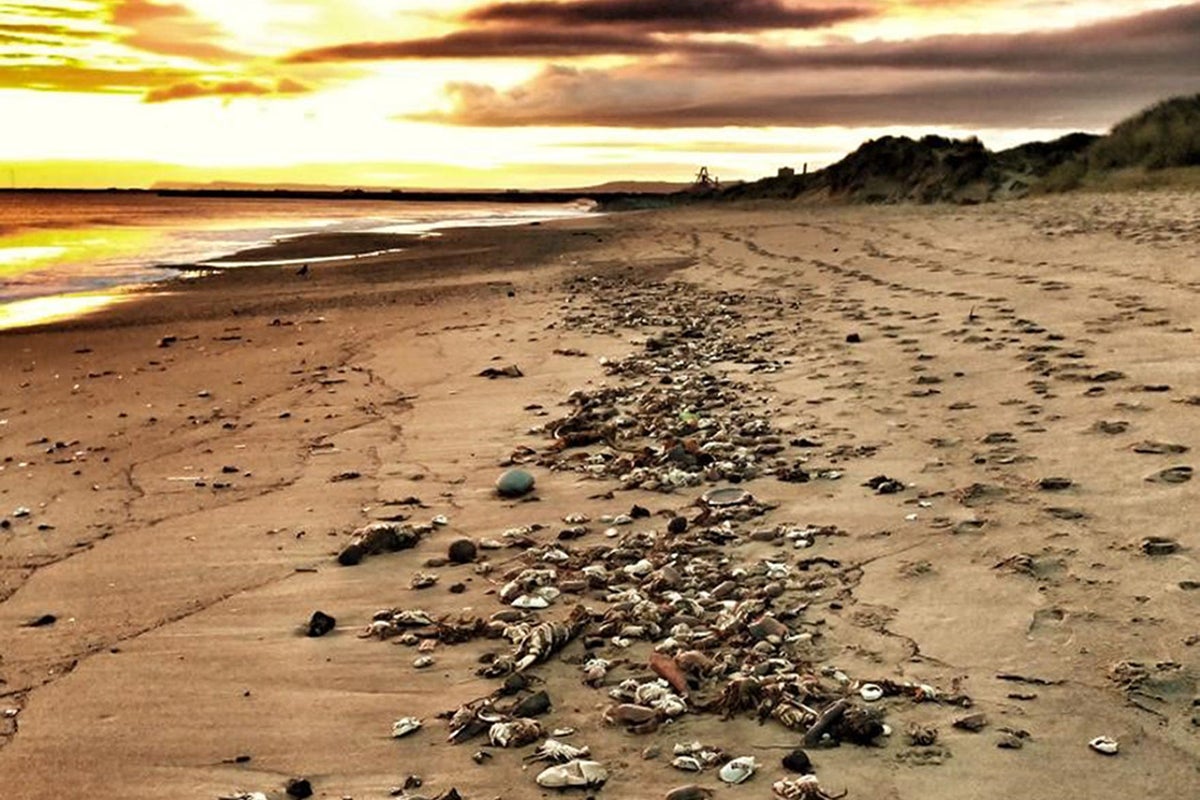Get the free Morning Headlines email for news from our reporters across the world
Sign up to our free Morning Headlines email
A mystery pathogen could be the cause of a mass die-off of sea life off the coast of northeast England that lasted more than a year, a government report has concluded.
A microorganism new to UK waters, such as a disease-causing parasite, may be to blame, experts say.
In October 2021, the bodies of crabs, lobsters, lugworms and razor clams began littering beaches for 80km (50 miles), from Hartlepool to Whitby and Scarborough.
Some of the crustaceans were seen twitching – an unusual phenomenon when creatures are washed up – and many displayed lethargic behaviour.
The mass deaths, first revealed by The Independent, led to seal pups washing ashore emaciated, unable to feed on crustaceans.
Recommended
Eco activists, scientists, fishermen and divers, concerned about the disaster that threatened the creatures as well as their livelihoods, suspected the blame lay with toxins linked to dredging, the lifting of sand and sediment from the sea floor.
They blamed work to expand the government’s flagship freeport in Teesside, saying it stirred up dormant chemicals in the seabed. Research by academics, backed by the fishing industry, suggested the cause could be the industrial pollutant pyridine.
Former MP Anna Turley branded the scenes on the beaches “apocalyptic”.
The creatures continued to die until December 2021, and more deaths were observed again in May last year.
But now an expert panel says it is “exceptionally unlikely” that the mass mortality was caused by the dredging.
Sustained release of very large volumes of the chemical is considered very unlikely
The Independent Expert Assessment of Unusual Crustacean Mortality
The panel, set up in December and comprising academics and industry experts, has concluded it was “about as likely as not” that a pathogen new to UK waters – a potential disease or parasite – caused the crab deaths.
The working group, chaired by Gideon Henderson, chief scientific adviser at the Department for Environment, Food and Rural Affairs, also found it was “very unlikely” the cause was pyridine or another pollutant.
The report says: “Overall, the panel was unable to identify a clear and convincing single cause for the unusual crustacean mortality…
“A novel pathogen is considered the most likely cause of mortality (despite the lack of direct evidence of such a pathogen).”
It says an algal bloom would explain the wide distribution of deaths but is unlikely to explain the twitching or long duration.
“The presence of a toxic substance could explain the twitching, but no source of sufficient amount of any toxic material could be identified,” the report states.
“Although a range of chemicals, including pyridine, are known to be toxic to crustaceans, the wide geographical spread and long duration of the event would require sustained release of very large volumes of the chemical, which is considered very unlikely from point sources or due to dredging as a cause.”
Recommended
Tees Valley’s Tory elected mayor, Ben Houchen, said the report made clear that work on a freeport was not to blame.
The fishing industry had been ruined by a natural disaster, he said. “And it is now essential government steps up and supports them to recover from the events of October 2021.”
✕
Subscribe to Independent Premium to bookmark this article
Want to bookmark your favourite articles and stories to read or reference later? Start your Independent Premium subscription today.
SubscribeAlready subscribed? Log in
Popular videos
{{/link}}

